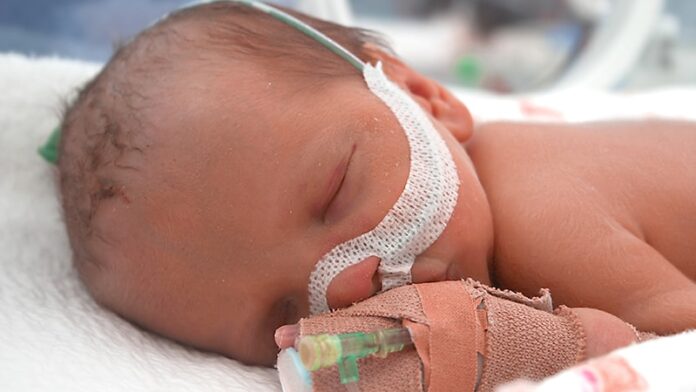Bronchopulmonary Dysplasia (BPD) is a severe respiratory pathology that occurs in a significant number of premature newborns. A new therapeutic approach involves the combination of budesonide (a corticosteroid) and pulmonary surfactant: a comprehensive meta-analysis confirmed that this regimen significantly reduces the incidence of BPD in premature newborns.
Bronchopulmonary Dysplasia (BPD) is a chronic lung disease. It is characterized by impaired lung development and the action of damaging etiological factors such as hyperoxic injury, infections, mechanical ventilation, and inflammatory reaction. The development of neonatal intensive care has increased newborn survival rates, and at the same time, the frequency of BPD has risen, subsequently causing severe respiratory and neurodevelopmental complications.
The new meta-analysis evaluated data from 12 Randomized Controlled Trials (RCTs) involving 2,428 premature newborns. Researchers compared clinical outcomes between two groups: patients treated with surfactant alone and patients whose lungs were administered surfactant in combination with budesonide.
Study Results:
The incidence of BPD was reduced by almost 33% in the budesonide + surfactant combination group compared to surfactant monotherapy.
Mortality in the clinic was reduced by 20%.
The frequency of pulmonary hemorrhage was reduced by 39%.
The need for repeated surfactant dosing was reduced by 48%.
No statistically significant increase in overall complications (such as pneumothorax, necrotizing enterocolitis, or sepsis/infections) was observed.
The combined therapy enhances the anti-inflammatory effect in the lung parenchyma, which provides protection for the delicate alveolar tissue during the critical stage of lung development. Budesonide’s unique characteristic—reversible binding to cellular receptors—allows it to act locally in the lungs with minimal systemic side effects. This fact makes it a safer alternative compared to systemic glucocorticoids, whose use is associated with harmful side effects such as growth restriction and neurodevelopmental disorders.
Despite some methodological limitations (such as publication bias and different definitions of BPD in various studies), the overall scientific evidence supports the efficacy and safety of this combined therapy.
This critical finding potentially changes clinical practice regarding how Neonatal Intensive Care Units (NICU) manage respiratory distress and BPD in premature newborns. However, additional studies are still needed to determine the optimal dosage and timing, as well as to confirm long-term safety.
Source: Pediatric Pulmonology


